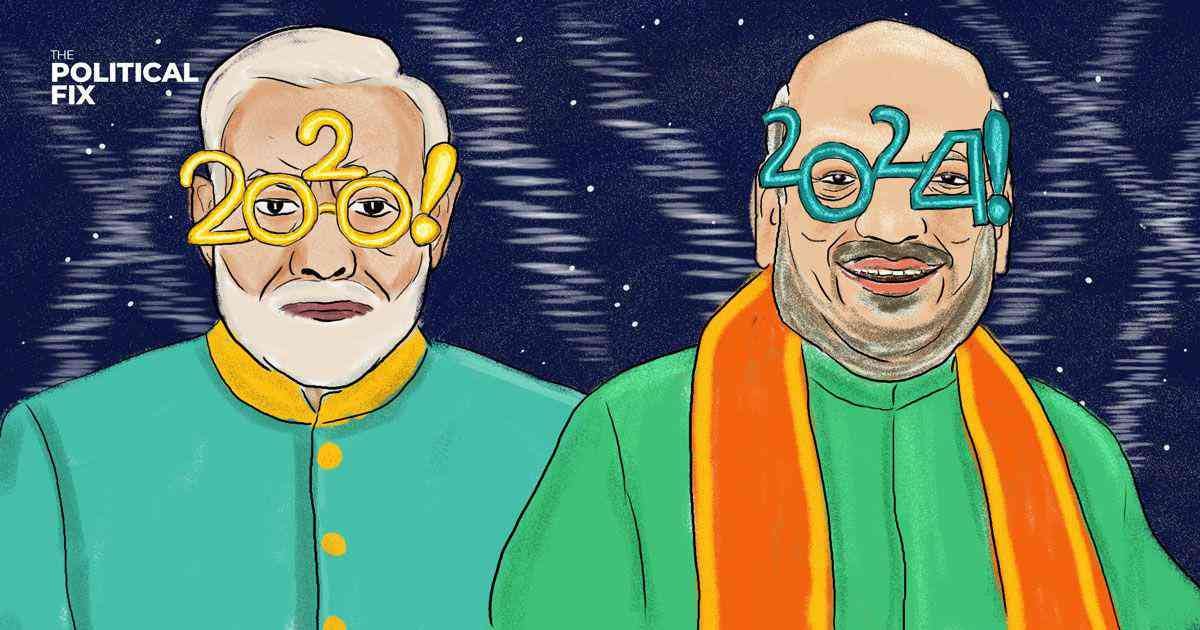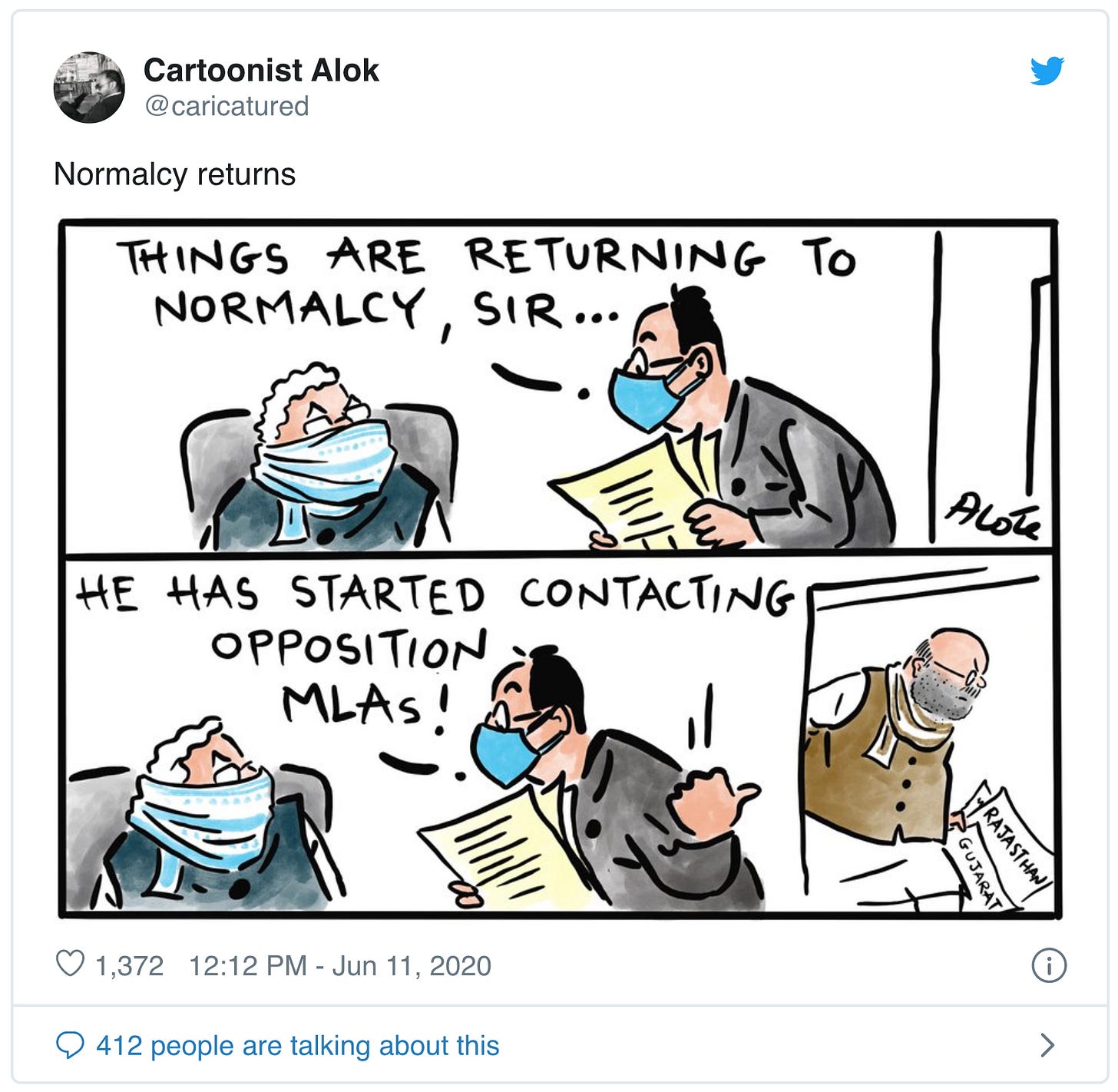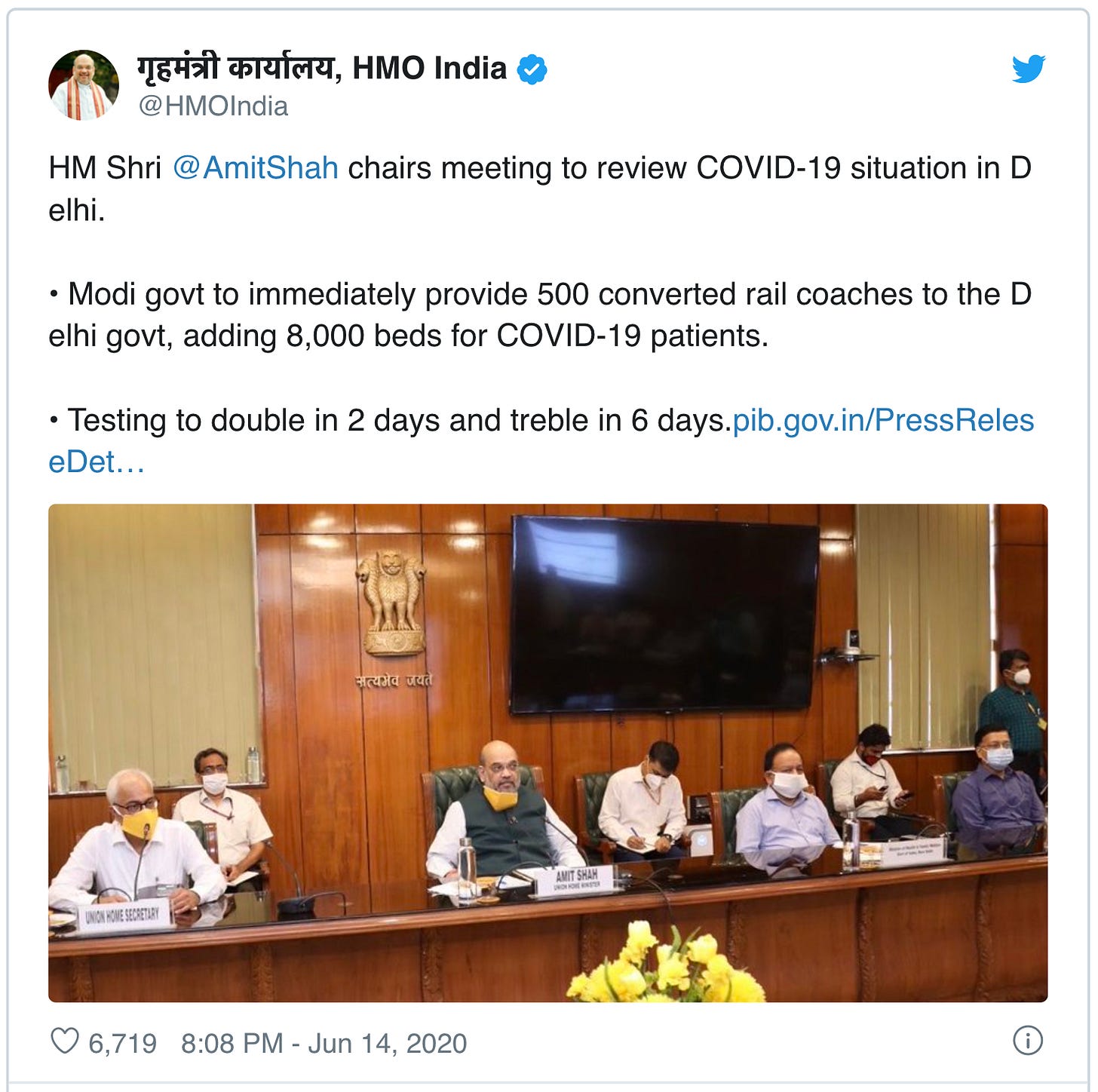The Political Fix: Holding political rallies and taking charge of Delhi, is Amit Shah back?
And was he ever gone in the first place?
Welcome to the Political Fix by Rohan Venkataramakrishnan, a newsletter on Indian politics and policy. To get it in your inbox, sign up here .
You can help support this newsletter and all the work we do at Scroll.in either by subscribing to Scroll+ or by contributing any amount you prefer to the Scroll.in Reporting Fund.

Welcome to the Political Fix by Rohan Venkataramakrishnan, a newsletter on Indian politics and policy. To get it in your inbox, sign up here .
You can help support this newsletter and all the work we do at Scroll.in either by subscribing to Scroll+ or by contributing any amount you prefer to the Scroll.in Reporting Fund.
Contribute to the Scroll Reporting Fund
The Big Story: Don’t call it a comeback
Is Amit Shah back?
Of course, India’s Home Minister and former president of the ruling Bharatiya Janata Party was never really gone. Yet there was a period this year where he seemed somewhat absent, in stark contrast to the previous months.
Ever since the BJP was re-elected in 2019 with a huge national mandate, Shah had been taking a much larger role compared to his stature during Prime Minister Narendra Modi’s first term.
It was Shah who steered the monumental, controversial changes to the autonomy of Jammu and Kashmir, introduced the law criminalising instant divorce in Islam and traveled around the country promising that a National Register of Citizens would be instituted after the passage of Citizenship Act amendments that are believed by many to be discriminatory.
We even asked, on this newsletter, whether Amit Shah was grabbing the spotlight from Modi because, as another theory suggested, this seemed to be an extremely rare case of succession planning in an Indian political party.

Illustration: Nithya Subramanian
Then the Citizenship Amendment Act-National Register of Citizens controversy sparked off massive protests around the country, forcing Modi to publicly distance himself from Shah’s more controversial assertions. This period coincided with several middling state election results for the Bharatiya Janata Party, provoking questions about whether Shah had lost his touch or was too stretched between his role in government and with the party.
(The presidency moved to JP Nadda in January, though Shah is still consulted on most key matters.)
Next came the Delhi election campaign that seemed classic Amit Shah: combative and controversial, with the open aim of religious polarising the electorate. The BJP received a drubbing, but the charged climate eventually led to the first large-scale riots in four decades in the capital.
This was when Shah seemed to disappear. National Security Advisor Ajit Doval ended up taking charge on ground – though media leaks later insisted that Amit Shah had deputed him. As the aftermath of the Delhi violence rolled into the Covid-19 crisis, Shah continue to seem relatively subdued, aside from one pugnacious speech in Parliament.
Indeed, so absent was Shah from the headlines that rumours spread about his health – prompting a public statement from the minister insisting that he was fine. Ahmedabad Police detained four people allegedly spreading misinformation around this.
Over the last few weeks, the Home Minister has started to seem much more prominent again, predictably alongside issues of politics, rather than governance.
Shah appeared to be the one taking on West Bengal Chief Minister Mamata Banerjee for her state’s allegedly lackadaisical Covid-19 response. He turned up on TV to push back against the questions being raised about his government’s massive mishandling of the migrant crisis, saying some only started walking home because they “lost patience”.
There have also been moves to destabilise the coalition government in Maharashtra as well as poach legislators in Gujarat and Rajasthan that appear to be right out of Shah’s playbook.

Then, with the country still in the throes of the coronavirus crisis, India’s Home Minister properly returned to home territory by re-starting large-scale political activity: He held three virtual BJP rallies in Odisha, Bihar and West Bengal.
Even while insisting that these were just attempts to reach out to the party’s members, they clearly served as the opening salvos for Bihar (elections due in October-November) and West Bengal (elections due April-May 2021).

And now, as Delhi struggles with the rise in Covid-19 cases – which we wrote about on the Friday links edition – Amit Shah seems to have taken charge. After announcing a number of changes, including a promise to treble testing within a week, on Monday, Shah will hold an all-party meeting about the situation.
In some ways, Delhi Chief Minister Arvind Kejriwal appears to be a willing participant in not just a de-facto President’s Rule in the capital, but also the Amit Shah comeback narrative – since it is him, and not, say, the Health Minister, assisting the state.

So, is Amit Shah really back? Is it a sign that the government wants the narrative to turn away from the Covid-19 crisis? Will his return also bring back controversial issues like the CAA-NRC?
Jyoti Punwani argues that Shah’s critics are getting it wrong, and that he was working this entire time, just quietly.
“While the coronavirus rages across Delhi, we see youngsters, including a five-month pregnant student, in Delhi’s jails under an anti-terrorist act, despite a Supreme Court order to decongest jails during the coronavirus outbreak. With over 3,000 cases and 38 deaths in Jammu and Kashmir, we see residents in the Union Territory fearful about outsiders getting into top administrative posts, thanks to the new domicile law.
And we think Amit Shah was doing nothing during the lockdown.”
What explains the period when he was subdued? One common theory in Delhi was that the Ajit Doval ‘camp’ saw its star rise after Shah was unable to bring calm to the raging CAA controversy or prevent riots in the capital.
Another was that Modi had recognised that Shah is not a useful presence if the aim is to lower tempers or project governance, and so in the aftermath of riots or at the start of the Covid-19 crisis, the Home Minister was not the face of the government.
Very few people in Delhi (or Gujarat) can claim to have genuine insight into the way Modi-Shah relationship – though you should go back to last year’s press conference with both present for a glimpse of how they work together. So we may not get insight into what Shah’s quiet period actually meant.
But considering the Home Minister’s tendency to rabble-rouse and take combative positions, if he actually is back to prominence, you can except more political controversy to erupt anytime now.
On that note, Harish Khare in the Wire argues that it is time for Shah to take over the Defence Ministry, currently grappling with Chinese intrusions:
“True, the Chinese leadership may have a civilisational claim to Sun Tzu, but we also have the historical heritage of Chanakya. And, Amit Shah has more than once proven himself to be the rightful legatee of that heritage. Repeatedly, the best and the brightest among our media have anointed him ‘Modern-day Chankaya.’
It helps that Amit Shah has two other qualities: he is obsessed with ‘ghuspetiyas’ [infiltrators], and is a ‘nibbler’ par excellence. If Chinese infiltrators can nibble our territory, we also need to have a minister who is adept at the art of nibbling. A man who can nibble Congress MLAs in state after state can be confidently relied upon to start playing the nibbling game with the Chinese. It is an enterprise that admits of no restraint, no moral qualms, and no second thoughts.”
Scroll.in Ground Report
Supriya Sharma, executive editor of Scroll.in, brought you a whole week’s worth of reports from Varanasi, one of India’s oldest and poorest cities that is struggling to handle the Covid-19 crisis and the effects of the lockdown.
“In the lanes around Kashi Vishwanath temple, Dilip Singh sat at the entrance of his shop bedecked with Banarsi sarees. He had opened the shop on May 21. Nearly three weeks later, he hadn’t sold a single saree. ‘Boni tak nahi hui,’ he said. There hasn’t even been an initial sale.
Yet, he was opening the shop every alternate day. ‘Asha pe duniya tiki hai.’ The world lives on hope.
In Varanasi, hope verged on hubris: nearly no one seemed to be wearing face masks, even though coronavirus cases were rising with the return of migrant workers. ‘Banarasi akhad hota hai,’ Singh laughed. Banarasis are overconfident. ‘They think baba is watching over them.’”
Read all of the pieces, and if you want to support more journalism that takes you beyond the headlines, contribute any amount you prefer to the Scroll.in Reporting Fund.
Flotsam and Jetsam
Will India, or at least the worst-hit places like Delhi, go back into lockdown? The government has denied any such plan, which usually means there is one on the table.
The numbers continue to soar, with more than 320,000 total cases, and 9,195 deaths as of June 14. India is now the fourth worst-hit country, and its graph continues to head straight up. The recovery rate, however, is over 50%.

India insists that relations with China are stabilising, even though reports have suggested that Beijing is refusing to give up territory it grabbed in Ladakh. Meanwhile, Nepal’s Parliament amended its Constitution with a Bill that changed maps to include within its borders three areas that fall under Indian territory.
Former Prime Minister HD Deve Gowda was, among others, elected unopposed to the Rajya Sabha. Mukul Roy is fighting to be a part of the BJP’s Bengal efforts. Tamil Nadu transferred its health secretary after mismatches in the number of state deaths. The Goods and Services Tax Council met to reduce liability on those who have not filed returns yet, while also deciding to host a single-point meeting on the big question of compensation in July. The invest-in-Jio train continues chugging along.
India might have more than 320,000 cases, but the Centre claims there is still no community transmission.
Can’t make this up
The Goods and Services Tax was supposed to simplify taxation in India, but it hasn’t gone quite as expected.
The Karnataka Authority for Advanced Ruling this week decided that (frozen) parotas are not the same as rotis and so could not qualify for the low 5% GST rate and would instead come under the 18% rate.

Thank you for reading the Political Fix. Send brickbats and bouquets to rohan@scroll.in and if you enjoy this newsletter, please do share it.


